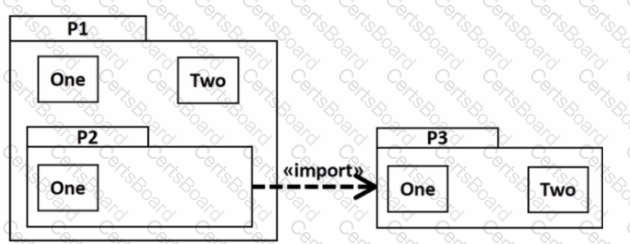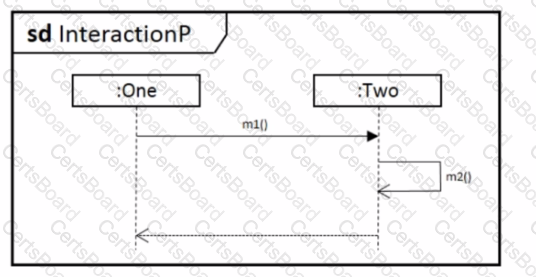Choose the correct answer:
Consider the following diagram:

Which element(s) from P3 are visible inside P2 without using a qualified name?
Choose the correct answer:
When is a state machine for an object created and ready to accept events?
Choose the correct answer:
In the context of a UML model designed to capture the elements of a real-world business enterprise, the class Employee appears in the fragment of a class diagram as shown below:

Which actual entity does this element represent?
Choose the correct answer:
Which sequence of behavior executions occurs if the state machine below is in state S11 and an event of type E occurs?

Choose the correct answer:
Which statement is correct about a FlowFmalNode in an Activity?
Choose the correct answer:
Consider the following diagram:

How many event occurrences are specified in InteractionP?
Choose the correct answer:
Consider the following diagram:

According to the diagram, which statement describes the property db?


